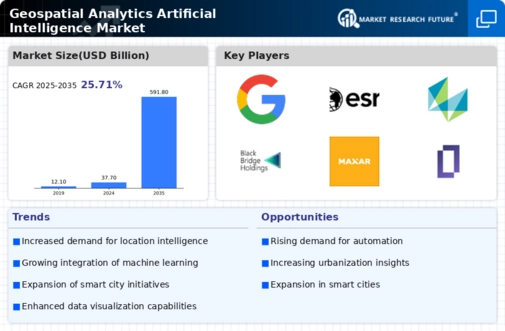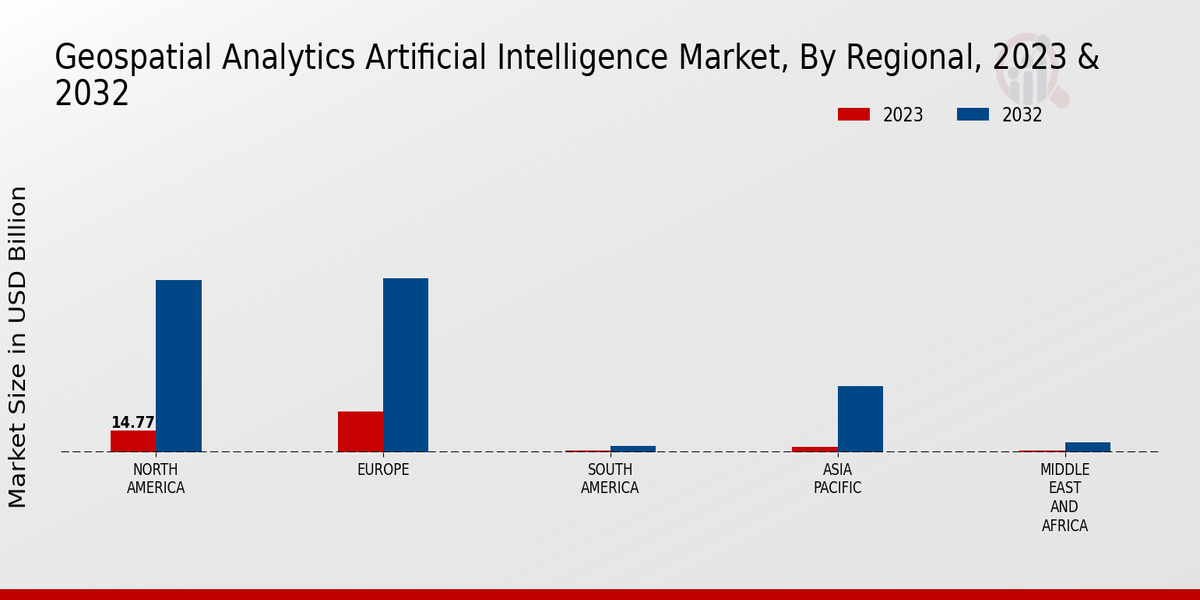Market Growth Projections
The Global Geospatial Analytics Artificial Intelligence Market Industry is poised for remarkable growth, with projections indicating a market value of 37.7 USD Billion in 2024 and an anticipated surge to 591.8 USD Billion by 2035. This trajectory reflects a compound annual growth rate of 28.43% from 2025 to 2035, underscoring the increasing reliance on geospatial analytics across various sectors. The integration of AI technologies is expected to enhance data processing capabilities, enabling organizations to derive valuable insights from complex geospatial datasets. This growth is indicative of the broader trend towards data-driven decision-making in an increasingly interconnected world.
Increased Adoption of IoT Devices
The proliferation of Internet of Things (IoT) devices is a key factor propelling the Global Geospatial Analytics Artificial Intelligence Market Industry. As more devices become interconnected, the volume of geospatial data generated increases exponentially. This data can be analyzed to monitor environmental changes, optimize logistics, and enhance public safety. For example, smart sensors deployed in urban areas can provide real-time data on traffic patterns, enabling better urban planning. The integration of IoT with geospatial analytics is likely to create new opportunities for businesses and governments alike, further driving market expansion.
Government Initiatives and Investments
Government initiatives and investments in geospatial technologies significantly influence the Global Geospatial Analytics Artificial Intelligence Market Industry. Various governments worldwide are prioritizing the development of smart cities and infrastructure projects that rely on geospatial data for planning and execution. For instance, the implementation of national spatial data infrastructures facilitates data sharing among agencies, enhancing collaboration and efficiency. Such initiatives not only drive market growth but also ensure that geospatial analytics becomes integral to public policy and urban development strategies, thereby fostering a conducive environment for innovation.
Advancements in AI and Machine Learning
Technological advancements in artificial intelligence and machine learning are pivotal drivers of the Global Geospatial Analytics Artificial Intelligence Market Industry. These innovations enable more sophisticated data analysis, allowing for the extraction of actionable insights from vast geospatial datasets. For example, AI algorithms can identify patterns in urban development, aiding city planners in resource allocation. The integration of AI with geospatial analytics is expected to contribute to a compound annual growth rate of 28.43% from 2025 to 2035, highlighting the transformative potential of these technologies in shaping future applications.
Rising Demand for Location-Based Services
The Global Geospatial Analytics Artificial Intelligence Market Industry experiences a surge in demand for location-based services across various sectors, including retail, transportation, and urban planning. Businesses increasingly leverage geospatial analytics to enhance customer experiences and optimize operations. For instance, retailers utilize location data to tailor marketing strategies and improve supply chain efficiency. This trend is reflected in the projected market value of 37.7 USD Billion in 2024, indicating a robust growth trajectory as organizations recognize the value of spatial data in decision-making processes.
Growing Need for Disaster Management Solutions
The Global Geospatial Analytics Artificial Intelligence Market Industry is increasingly focused on developing solutions for disaster management and response. As climate change intensifies, the need for effective disaster preparedness and recovery strategies becomes more pressing. Geospatial analytics can provide critical insights into risk assessment, resource allocation, and emergency response planning. For instance, AI-driven models can predict the impact of natural disasters, allowing authorities to implement timely interventions. This growing emphasis on disaster management is expected to shape the market landscape, with the potential to reach a staggering 591.8 USD Billion by 2035.















